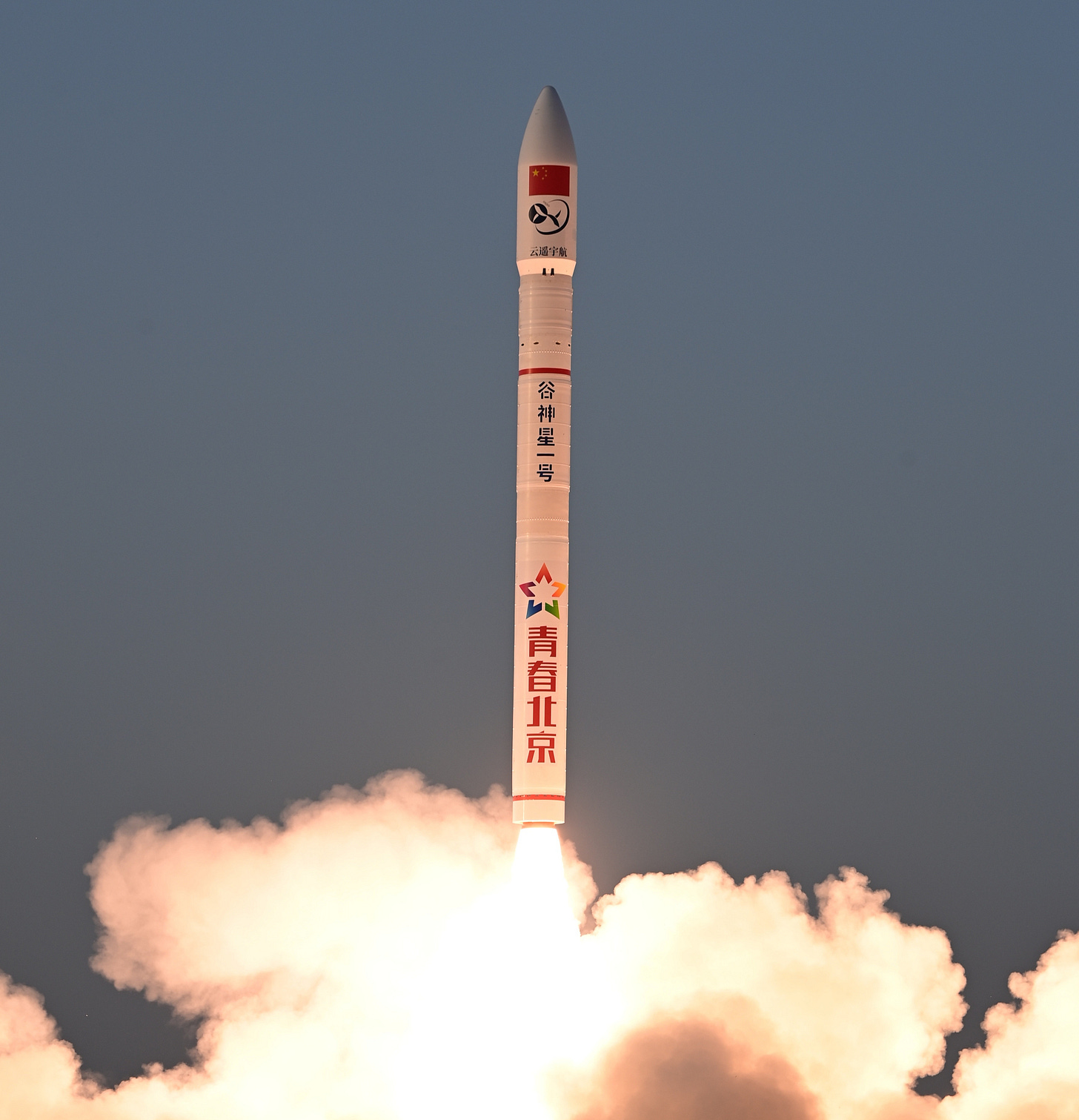Back-to-Back Meteorology [Ceres-1 Y17]
Five days after its last mission, Ceres-1 has taken flight again.

This week has seen a second Ceres-1 lifting off from the Jiuquan Satellite Launch Center’s Launch Area 95A at 19:07 pm China Standard Time, or 11:07 am Universal Coordinated Time, on March 21st. Today’s mission had a handful of satellites for a repeat customer onboard, also to a 535-kilometer sun-synchronous orbit.
Like the previous Ceres-1 mission, six Yunyao-1 (云遥一号) meteorological satellites from Yunyao Aerospace (云遥宇航), numbered 43 through 48, were onboard. With the launch of an additional five satellites, the constellation now has fifty-two satellites in orbit. So far over half of the planned ninety-satellite meteorology constellation has been delivered into orbit.
Each of the Yunyao-1 satellites has a global navigation satellite system radio occultation payload along with an infrared imager to provide regular and accurate weather services through the constellation. These satellites will assist in weather prediction, magnetic storm monitoring, and ocean forecasting.
Additionally, Yunyao Aerospace is already planning a follow-up meteorology constellation, creatively named Yunyao-2 (云遥二号). This constellation will consist of twenty-four satellites launched over two years. Each Yunyao-2 satellite is planned to be the size of existing Fengyun (风云) meteorological satellites, no potential mass was stated, and possibly with capabilities close to the Fengyun-4 fleet as the company is seeking world-leading capabilities.
Galactic Energy noted in their post-launch blog post that Ceres-1 has successfully flown into orbit eighteen times carrying seventy-seven satellites, of which twenty-two were for Yunyao Aerospace. According to the company, this has further solidified the rocket as China’s most successful privately-operated launch vehicle.
Today’s launch was the 15th mission for Ceres-1, and the 19th launch for the Ceres-1 launch vehicle series (Ceres-1 and Ceres-1S). This was also the 15th launch from China in 2025.
Liftoff video via 北京蓝龙 and 我们的太空 on Weibo.
Check out the previous Ceres-1 launch
Back in Business from Jiuquan [Ceres-1 Y10]
Galactic Energy’s Ceres-1 blasted off from Launch Area 95A at 16:07 pm China Standard Time, or 08:07 am Universal Coordinated Time, on March 17th for its second mission of the year. This mission had the rocket heading to a 535-kilometer sun-synchronous orbit from the Jiuquan Satellite Launch Cente…
What is Ceres-1/1S?
This section is for those less familiar with China's commercial launch vehicles.
Galactic Energy’s Ceres-1, and its sea launch version Ceres-1S, is a four-stage launch vehicle that burns solid fuel in the first three stages, and a storable propellant in the fourth-stage. The fourth-stage can also be replaced with the company’s Eros orbital test platform.
The payload capacity of the launch vehicle is currently as follows:
420 kilograms to low Earth orbit
300 kilograms to a 500-kilometer sun-synchronous orbit
270 kilograms to a 700-kilometer sun-synchronous orbit
The first-stage is powered by a solid rocket motor that burns an undisclosed solid propellant to produce 60 tons of thrust. The second-stage also burns an undisclosed solid propellant to produce 28 tons of thrust. The third-stage is the final solid rocket stage, once again burning an undisclosed solid propellant, producing 8.8 tons of thrust. The fourth-stage burns a storable liquid Monomethylhydrazine and mixed oxides of nitrogen fuel in an ‘attitude control thruster’ to generate 1 ton of thrust.
On the launchpad, Ceres-1 weighs 33,000 kilograms and stands 20 meters tall. The first, second, and third stage have a diameter of 1.4 meters while the fairing has a diameter of 1.6 meters.
So far Ceres-1 vehicles have flown from the Jiuquan Satellite Launch Center and various sea-based launch platforms.






![Back in Business from Jiuquan [Ceres-1 Y10]](https://substackcdn.com/image/fetch/w_1300,h_650,c_fill,f_auto,q_auto:good,fl_progressive:steep,g_auto/https%3A%2F%2Fsubstack-post-media.s3.amazonaws.com%2Fpublic%2Fimages%2F339a098d-2a13-4c10-b010-4c1ad8fe1531_3485x2032.jpeg)
